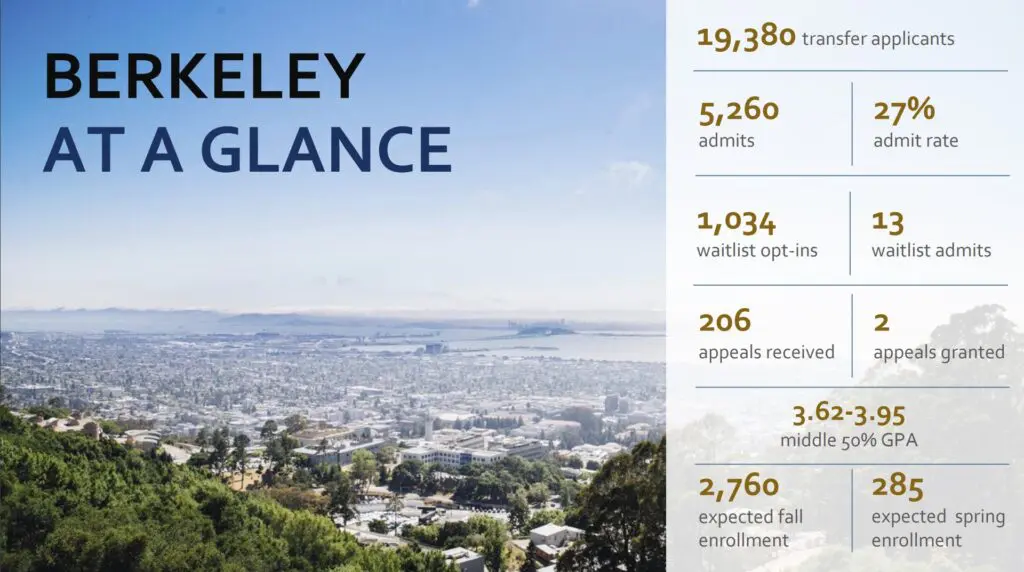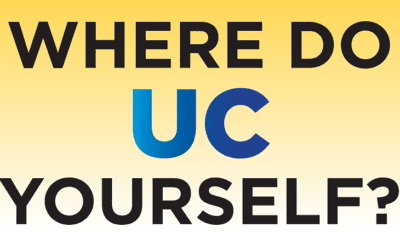If you’re one of the thousands of students who were waitlisted by UC schools for this fall, you may be feeling a range of emotions right now. You may be wondering what your next steps should be, and whether or not you have any chance of getting in. Don’t worry – we’re here to help. In this post, we’ll go over everything you need to know about the UC waitlist. Read on for more information.
What is a College Waitlist?
A college waitlist is a type of admissions process in which applicants who have not been accepted to their desired schools are placed on a list and may be offered admission at a later date if other admitted students decline the offer.
A college waitlist is typically used when the number of qualified candidates exceeds the number of spots available in a program or school.
When this occurs, colleges may put remaining applicants on a waitlist, which means they will be considered for admission only if spots become available due to accepted students declining their offers.
College waitlists provide hope for students who have not been admitted to their top choice school, as it gives them an opportunity to potentially receive admission down the line.
In order to be placed on a college waitlist, you must usually accept your position first before being officially added to the list. Waitlisted applicants can choose whether or not they wish to remain on the list once they have been notified that they are on it.

It’s important to remember that some colleges only allow applicants to stay on the waiting list until a certain date; usually shortly after those who were accepted and declined their offer must make their final decision.
If an applicant wishes to stay on the list past this point, they should contact the admissions office directly and ask for permission. Once approved, they should update their status with any new information such as GPA or test scores, and/or highlight any extracurricular activities or honors earned since applying.
Those who remain on the list beyond this cutoff date may also need to submit additional materials such as letters of recommendation or writing samples in order for colleges to fully consider them for admittance.
Related: 5 Tips to Improve Activities Section Common App
It is important to note that many schools use college waitlists as backup plans in case unexpected openings arise due to varying circumstances like late withdrawals from admitted students or undergraduate programs that don’t meet enrollment targets early in the summer semester.
Therefore, even though you may still not get into your dream school by sitting on its waiting list, it’s still worth considering making yourself available if you’re interested in attending there eventually down the line.
What is the UC Waitlist?
The University of California (UC) waitlist is a list of freshman applicants and transfers who have been deemed eligible for admission but cannot be immediately admitted due to space constraints. When space becomes available, students may be offered admission from the waitlist in order to fill any remaining spots in the incoming class.
Each UC campus has its own waitlist process and timeline; however, most campuses typically notify applicants of their waitlist status by the end of March and allow them to accept or decline by April 15.
Students who accept a spot on the UC waitlist will not receive an offer of admission until after this deadline when UC campuses begin assessing enrollment numbers and can determine how many students they will be able to admit from their waitlists.
Related Reading: CSU Apply Tips | California State University Application
These offers could come as late as summertime, depending on individual campus needs. It’s important to note that students may accept a spot on more than one campus waitlist; however, they should only submit a Statement of Intent to Register (SIR) to one institution in order to guarantee themselves a place at that school if they are admitted off the waitlist later in the year.
The University of California system is highly competitive, and each year thousands of applicants are added to the various campuses’ waitlists. While it can be disheartening for those who don’t receive an offer right away, it shouldn’t necessarily be seen as a rejection; instead, it is often just an indication that there were more qualified candidates than available spaces at that one campus.
Although admissions decisions made from the UC waitlists are unpredictable, typically around 10-20% of those accepted off these lists go on to attend their chosen campus in the fall term.
Waitlist Admission Rates – UC Campuses
| UC Campus | UC Waitlist Admit Rates 2019 | UC Waitlist Admit Rates 2020 |
|---|---|---|
| UCLA | 13% | 19% |
| UC Santa Barbara | 10% | 97% |
| UC San Diego | 22% | 27% |
| UC Irvine | 19% | 24% |
| UC Riverside | 34% | 67% |
| UC Santa Cruz | 62% | 86% |
| UC Berkeley | N/A | Increase of 1,668 students |
| UC Davis | N/A | Increase of 4,282 students |
Gary Clark, the Director of Undergraduate Admissions at UCLA, had this to say when asked about the prospects of students being admitted off the waitlist on any given year. Clark notes, “There are some years when we go to the waitlist for a good number of students, but there are other years when … there may be very, very few waitlist offers. So what happens in a previous admission cycle is not a predictor of what’s going to happen in a future admission cycle because every year is going to be different.”
A quick evaluation of the UC Waitlist Admits Rates will unveil that certain UC campuses are more susceptible to accepting students from the waitlist.
For example, if you apply to UC Santa Cruz or UC Riverside, then you have over a fifty percent chance of being accepted off the waitlist.
The reason these UCs have such high waitlist admissions is that they are often competing with the same cohort of students that the other nine UC Campuses are. In other words, students applying to a UC will have an obvious ‘favorite’ or ‘top-choice’ and will only elect to enroll at UC Santa Cruz or UC Riverside if all other options are taken away.
Accept UC Waitlist Decisions
To accept your admission to the University of California (UC), you will need to complete a Statement of Intent to Register (SIR) form or declare your intent to register on a website.
Students admitted for the fall term should submit their SIR by May 1, and applicants admitted after this SIR deadline or for the winter or spring term should respond by the established deadline indicated in their offer of admission. If you are required to mail in the SIR form, it must be postmarked by the established dates.
The SIR submission process is typically done online, so once you have been accepted, you will receive instructions from your respective UC campus which can either direct you to a website where you can declare your intent to register or provide you with a form that needs to be filled out and mailed in.
Related: The 5 UC Application Tips You Need to Get into the University of California
This form will ask for basic contact information such as your full name, address, and phone number as well as any other specifics indicated in the instructions. You will then need to indicate whether or not you accept or decline the admission offer at that particular UC campus on this form/website.
Once you have completed and submitted the SIR form/declared your intent on the website, it is important that you follow up with an email/phone call to verify they have received it and confirm all necessary steps have been taken.
It is also important that before deciding on a single UC campus, wait until hearing back from all other campuses which have accepted your application so that you can make an informed decision about which one is best suited for you.
Deadline to Accept Admission for UC Waitlist Decision
The opt-in deadline for the waitlist at the University of California is typically April 15, but some UC campuses will have earlier or later waitlist deadlines. For example, UC Santa Cruz has an opt-in deadline of March 21.
Related Reading: The Conclusive List of Capped Majors at UCSD | UC Admissions Dates & Deadlines 2023
Freshman Students UC Waitlist Offer Deadline: April 15th
- UC San Diego
- UC Santa Barbara
- UC Los Angeles
- UC Berkeley
- UC Irvine
- UC Davis
- UC Riverside
Freshman Students UC Waitlist Offer Deadline: March 21
- UC Santa Cruz
Transfer Students UC Waitlist Offer Deadline: May 15th
- UC San Diego
- UC Santa Barbara
- UC Los Angeles
- UC Berkeley
- UC Irvine
- UC Davis
- UC Riverside
Related: Majors at UC Merced: Exploring the Different Offerings
Related: 6 Impacted Majors at UCLA you Should Know About | 2023
Transfer Students UC Waitlist Offer Deadline: April 20th
- UC Santa Cruz
Timeline for Notification of Waitlist Admission Decision Release
Typically, UC campuses will release Freshman decisions from the waitlist between the months of May and August.
Freshman applicants should make sure they have all other information, including financial aid and potential waitlist statement, prepared and ready to submit as there is not much time to wait once the waitlist offer of admission is initiated.
UC Transfer Applicants who find themselves on the waitlist can expect UC campuses to release admissions decisions from the waitlist between June 1 and July 31.
Some campuses can release admission decisions prior to June 1, and others can elect to wait to release the waitlist until after July 31.
Related: When do UC Decisions Come Out? 2023 UC Decision Date
UC Waitlist Frequently Asked Questions (FAQs)
Can I File an Appeal Even Though I am on the UC Waitlist?
Does the UC Waitlist Use Letters of Continued Interest in the Selection Process? What About a Specific UC Campus?
What Are My Chances for Admission if I am on the UC Waitlist?
The LA Times recently published an article revealing the percentage of waitlisted students who were admitted to the University of California from 2019-2020.
UCLA rose to 19% in 2020, up from 13% in 2019. UC San Diego saw a similar increase, with 27% of waitlisted students being admitted in 2020 as opposed to 22% the year prior.
Meanwhile, UC Irvine recorded 24%, up from 19%; UC Riverside jumped all the way to 67%, from 34%; and UC Santa Cruz reached 86%, compared to 62%.
Additionally, Berkeley offered 1,668 positions last year- a substantial increase from 2019- but their admission rate was not readily available at the time of publication.
In the same LA Times report, the number of undergraduate admissions who were offered seats from the waitlist was around 34,000 seats, with over 112,000 waitlist offers being notified.
Will I Know Where I Stand on the Waitlist in Relation to Other Students?
Admissions decisions are based on several different factors, so gauging where you might be on the waitlist will take away from the preparation that needs to be done in terms of submitting a waitlist statement or contacting the UC financial aid office to inquire about prospective financial aid packages should admission decisions prove positive for you.
In other words, the University of California (UC) waitlist is not run on a first come first serve basis because all UC waitlist applicants are highly qualified for UC admission, but were unfortunately left out in the grand scheme of seat availability.
Is Being Waitlisted Better Than Rejection?
On one hand, being waitlisted can provide a sense of hope that you may still be accepted into a program or organization.
On the other hand, it often means that you are not guaranteed an acceptance, and there is no timeline for when you might hear back from the institution.
Additionally, when compared with outright rejection, being waitlisted adds an additional element of uncertainty, as there is no guarantee that you will ultimately receive an offer of admission.
However, there are instances in which the previous cohort of applicants leaves open many vacated seats which the admissions office will look to fill by the first week of the fall semester on campus.
In terms of deciding whether being waitlisted is preferable to outright rejection, it’s important to consider what your goals are with regard to the application process.
If having certainty in the outcome is important to you, then having a definitive decision that outright rejections provide can be beneficial.
In contrast, if waiting for a response and potentially receiving good news at the end is more desirable for you, then being waitlisted could be preferable.
Ultimately, it comes down to weighing your options and determining which route will fit best within your desired outcome.
Another factor worth considering when assessing whether or not being waitlisted is better than rejection relates to how quickly and easily admissions decisions are made.
Rejections can typically arrive faster than waitlists due to the fact that these decisions are straightforward and clear-cut; whereas when deciding between multiple candidates who have very similar qualifications or strengths and weaknesses, it may take longer for institutions to make their final selections due to further evaluation or comparison needed among applicants in order to decide who should ultimately get offered admission.
As such, if speed is important in your decision-making process then it would be worth keeping this in mind as well.
Overall, while both situations may feel unpleasant or uncertain in different ways depending on each person’s circumstances and preferences; given the potential positives associated with being waitlisted like the possibility of still receiving an offer of admission eventually even if it takes more time – this option could theoretically prove more advantageous than outright rejection – though only if such outcomes align with one’s individual goals and needs within any given situation.
What If I Get Accepted from the Waitlist of two UCs
Students can reside on more than one waitlist for the UC application, but if waitlist offers are extended for more than one school, then students will have to accept waitlist offers and admission offers from only one campus.
Conclusion
Overall, the UC waitlist can be a stressful time for students waiting to hear an admissions decision from their chosen UC campus. Although the waitlist is not necessarily indicative of rejection, it can still be difficult to have your future plans on hold.
In this blog post, we discussed the process of accepting a UC waitlist offer, including opt-in deadlines and notification period timeline. Remember to stay in touch with your respective campus and make sure you have declared your intent to register before the established deadline.
Also, it is important that you consider all options before making a decision on which UC campus to attend. We wish you luck in your endeavors on the UC waitlist and ask that you reach out to California Transfer Support Network if you need any help and guidance with the UC admission or transfer process.





